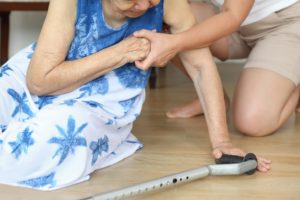 For adults aged 65 and older, falls can be a significant concern, especially if they suffer from cardiovascular disease. Each year, one out of three seniors experiences a fall, and statistics show the number of deaths associated with these falls is rising.
For adults aged 65 and older, falls can be a significant concern, especially if they suffer from cardiovascular disease. Each year, one out of three seniors experiences a fall, and statistics show the number of deaths associated with these falls is rising.
Falls among seniors are the leading cause of fatal and non-fatal injuries for Americans. They can threaten seniors’ safety and independence and generate enormous economic and personal costs. This is why it is imperative to find new ways to lessen the risk of falls by linking other health issues that may be associated.
Advertisement
A new study published in the Journal of the American Geriatrics Society has identified new factors that can contribute to falls. Stephen Juraschek, MD, Ph.D., a primary care physician at Beth Israel Deaconess Medical Center (BIDMC) and his team of researchers found that subclinical myocardial damage and cardiac wall strain are associated with a higher risk of falling in older adults without known cardiovascular disease (CVD). These findings represent new interventions for preventing falls among seniors by targeting and improving cardiovascular health.
“Given that falls can often be fatal for older adults, greater knowledge of the factors that contribute to falls represents a significant public health priority,” said Juraschek. “For the first time, our study shows that subclinical CVD is itself a fall risk factor. This raises the important question of whether treatment of subclinical CVD could help prevent falls among older adults.”
For the study, researchers looked at nearly 4,000 older adults with an average age of 75 years for four and half years. During this period, participants were asked to report any hospitalization. Their medical records, as well as any claims from the Centers of Medicare and Medicaid Services (CMS), were linked with their study information. If any participant was to have a fall during the time of the study, they were identified from hospital discharge ICD-9 codes or CMS claims.
Prevention of CVD and Fall Intervention
Study author Juraschek spoke about the research saying, “Our findings are informative for clinical discussions about both the primary prevention of CVD and fall interventions in older adults. Whether treatment of subclinical CVD could help prevent falls among older adults is beyond the scope of the present study but represents an important subject of subsequent fall prevention research. Such research has the potential to inform practitioners considering the risk and benefits of primary prevention treatments in older adults at risk for falls.”
The conclusion of the study showed that older-aged adults without known cardiovascular disease, stroke, or heart failure had markers of subclinical myocardial damage and cardiac wall strain that were strongly and independently associated with new falls. This shows that biomarkers of cardiac damage and wall strain could be risk factors for falls and may lead to new interventions for preventing falls among seniors.
